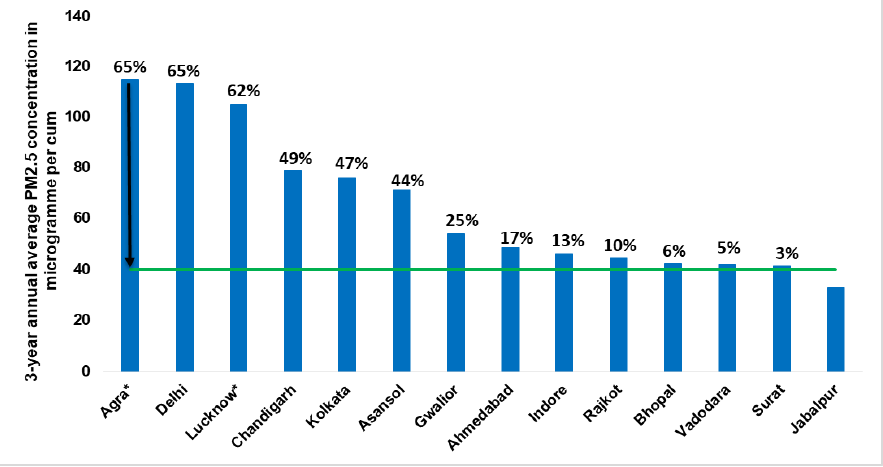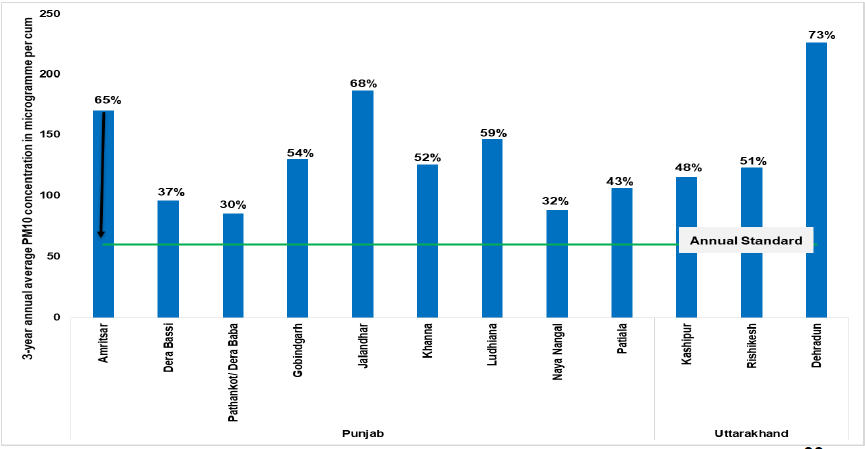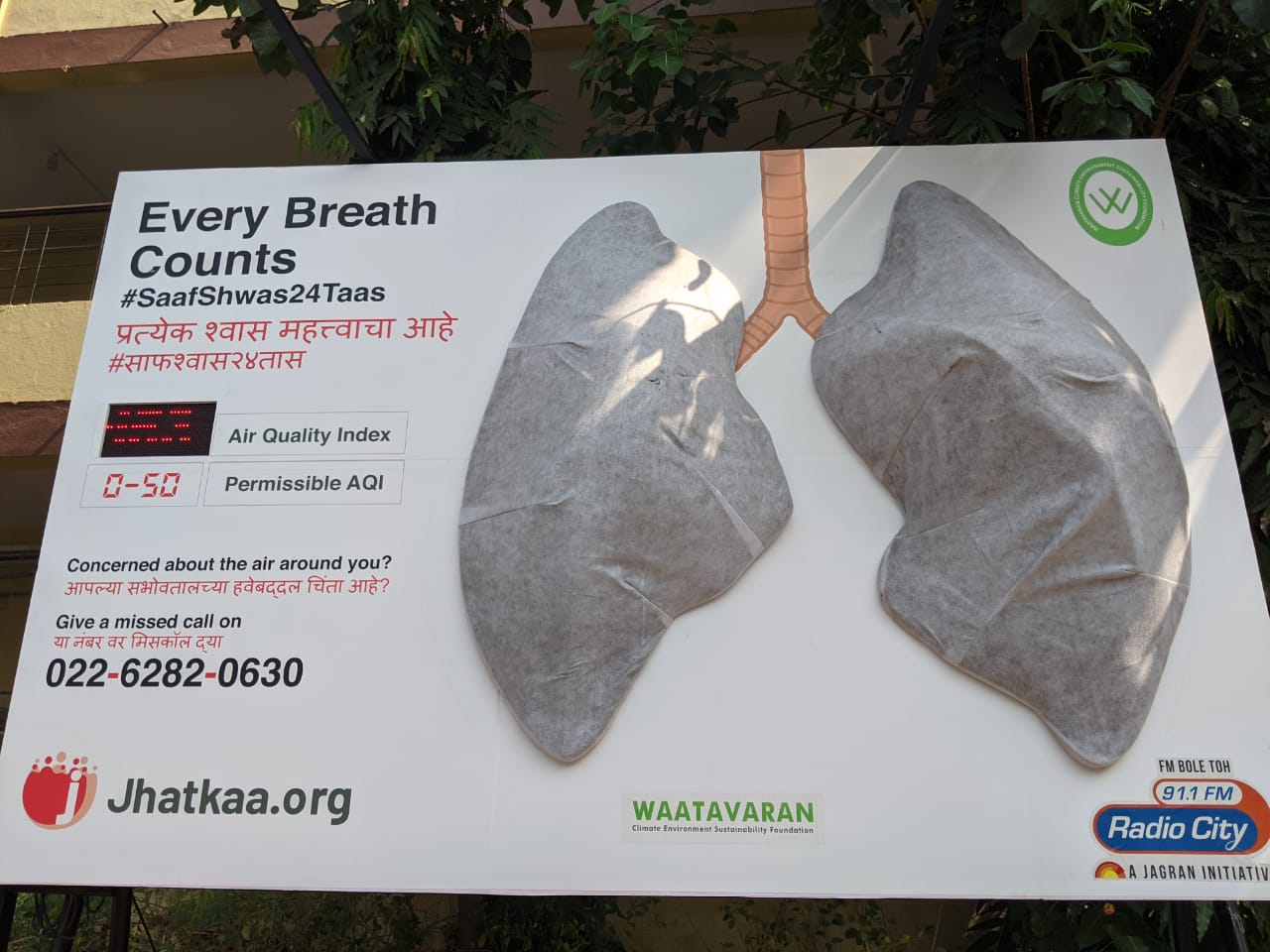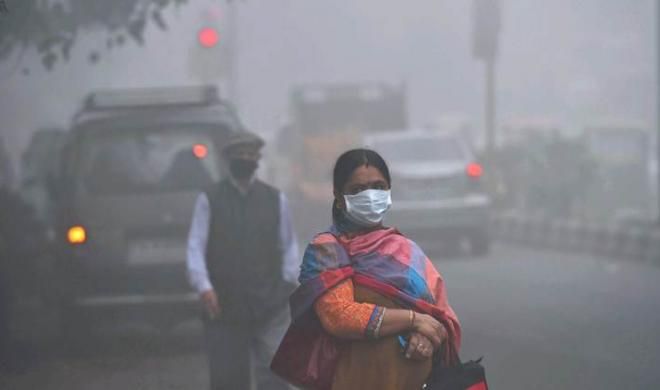The National Clean Air Programme may fail to clean up the toxic air
The Indian government has drawn up an ambitious plan to clean up the polluted air of 122 cities. But, in the absence of a scientific monitoring and reporting mechanism, pollution reduction targets may remain only on paper

New Delhi
Last January, the Union ministry of environment, forest and climate change launched a time-bound action plan to address air pollution in the country by notifying the National Clean Air Programme. As per the plan, 122 cities have to reduce 20-30 per cent of their particulate pollution by 2024 as compared to their 2017 levels.
But, a year later, looking at the progress of the programme, these cities may fail to clean up their act, warn experts.
“The National Clean Air Programme is certainly a step in the right direction because as a country we now have a national framework to address the air pollution crisis. For the first time, pollution reduction targets have been set for 122 cities not meeting the particulate matter standards,” said Anumita Roychowdhury, executive director (research and advocacy) with Centre for Science and Environment (CSE), New Delhi.
But, the pollution reduction target of 20-30 per cent is a generic one for all the 122 cities. “When you go city by city and look at their present air pollution levels and the air quality standards they need to meet, then the actual reduction needed to meet the standard is 50-70 per cent. Cities need to make deep cuts,” she added.
There is an additional challenge of reporting air quality data under the national plan. As of now, there is no methodology for 122 cities to calculate reduction in particulate matter pollution. There is no prescribed method by which reduction trends are to be reported. Most cities do not have real-time air pollution monitoring stations. These issues also need to be resolved in order to effectively implement the national action plan.
In its recently released report, Airpocalypse – IV, Greenpeace India has pointed out how the list of 122 cities selected under the national clean air programme is incomplete, as it leaves out another 116 more cities that exceed the particulate matter (PM10) standard of 60 micrograms per cubic metre (µg/m3 limit) prescribed under the national ambient air quality standards.
“It is worrying to see that more than 80 per cent of cities had PM10 levels exceeding the 60 µg/m3 prescribed standard. If we want to make the National Clean Air Programme truly a national programme, then we have to include all polluted cities under it and implement the programme with the addition of specific pollution and emission reduction targets in a time-bound manner,” said Avinash Chanchal, senior campaigner, Greenpeace India.
National Clean Air Programme
Every year 1.2 million people die prematurely due to air pollution-related diseases in India. Sunita Narain, director-general of CSE, terms air pollution in the country as a national health emergency. The crisis of air pollution isn’t limited to Delhi-NCR [national capital region] alone. A large number of Indian cities do not meet the specified national ambient air quality standards (see graphs: PM2.5 and PM10 concentration in the Indian cities).

Note: The green line is the national standard.
PM10 is particulate matter 10 micrometers or less in diameter.
PM2.5 is particulate matter 2.5 micrometers or less in diameter
Source: Centre for Science and Environment, New Delhi.

Note: The green line is the national standard.
Source: Centre for Science and Environment, New Delhi.
The National Clean Air Programme (NCAP) is a mid-term, five-year plan with 2019 as its first year. The approach for NCAP includes “collaborative, multi-scale and cross-sectoral coordination between the relevant central ministries, state governments and local bodies.”
As per the national plan, by 2024, the chosen 122 cities — termed non-attainment cities (cities that consistently show poorer air quality than the national ambient air quality standards) — have to reduce their PM2.5 and PM10 concentration by 20-30 per cent as compared to the 2017 levels.
An assessment by CSE shows that 60 per cent of the non-attainment cities are in north India and almost 70 per cent of these 122 cities have population less than one million.
“Geography plays a crucial role in air pollution. The Indo-Gangetic belt has high levels of air pollution that gets worse during the winter months as pollutants get trapped due to formation of the inversion layer,” said Beig Gufran, project director (SAFAR – System of Air Quality and Weather Forecasting and Research), Indian Institute of Tropical Meteorology (IITM), Pune.
Cities need to make deep cuts
“Air pollution is there all through the year, but it becomes ‘visible’ during the winter due to inversion layer and moisture in the air. Cities like Delhi cannot blame stubble burning by farmers of the neighbouring states alone for high pollution. They have their own local sources of pollution that need to be tackled to clean up the air,” said Narain (see graph: Sector wise contribution of PM2.5 and PM10 in Delhi).

Source: https://www.ceew.in/publications/what-polluting-delhi’s-air
Delhi aside, the emission inventory data of other cities shows that in Jaipur (38 per cent), Indore (45 per cent), Ranchi (34 per cent), Agra (31 per cent) and Shimla (34 per cent), transport is a major source of PM2.5 pollution. In case of Ahmedabad (63 per cent), Kolkata-Howrah (55 per cent), Mumbai (49 per cent), Aurangabad (38 per cent) and Amritsar (32 per cent), local industries contribute in a big way towards high PM2.5 levels.
Assessment of air quality data by CSE shows that cities need to make deep cuts — way beyond 20-30 per cent specified in the national plan — to meet the national ambient air quality standards.
For instance, to meet the air quality standard for PM2.5, Agra and Lucknow in Uttar Pradesh need to cut down their particulate pollution by 65 per cent and 62 per cent, respectively. Chandigarh has to cut it down by 49 per cent, and Kolkata and Asansol in West Bengal by 47 per cent and 44 per cent, respectively.
In case of PM10, Dehradun, Rishikesh and Kashipur in Uttarakhand have to cut down pollution by 73 per cent, 51 per cent and 48 per cent, respectively. In Punjab, cities like Jalandhar, Amritsar and Ludhiana have to reduce pollution by 68 per cent, 65 per cent and 59 per cent, respectively. In Jodhpur, Jaipur and Alwar, the deep cuts needed are 68 per cent, 67 per cent and 61 per cent, respectively.
Clearly, air pollution is a national health emergency and the common minimum reduction target of 20-30 per cent is not sufficient.

Dangerous air quality in Mumbai
As far as particulate pollutants are concerned, PM2.5 is considered more dangerous to human health than PM10 because smaller the size of the particles, deeper they get inside the lungs and human bodies to cause damages.
Based on the air quality data between 2017 and 2019, IITM has calculated ratio of PM2.5 by PM10 to find out how much PM2.5 particles are there within the total PM10 concentration in four Indian cities — Mumbai, Delhi, Pune and Ahmedabad. Typically, this ratio should be 50 per cent.
“But, the result shows that PM2.5 ratio in PM10 [yearly average] is 65 per cent in Mumbai, the highest among the four cities. In Pune it is between 55-60 per cent and in Ahmedabad about 50 per cent,” informed Gufran. High PM2.5 ratio means the chances of adverse human health impacts are faster in Mumbai. “Interestingly, the PM2.5 to PM10 ratio in Delhi has come down to 42-45 per cent,” he added.
According to him, the reason for such high PM2.5 ratio in Mumbai is humidity and sea salt particles [sulphates and nitrated]. “Coastal city like Mumbai already has high humidity. When combustion [burning of fossil fuels] happens, pollutants get attached to the water droplets and stay much longer in the air. Secondly, when these pollutants deposit on sea salt particles present in the air, they become a cocktail of another toxic pollutants,” he explained.
Recently, a unique initiative has been launched in Mumbai — ‘The Billboard that Breathes’ — to inform the residents about high levels of air pollution in the city and its impacts on human health.
Jhatkaa.org, a city-based digital advocacy organisation, in collaboration with Waatavaran, an environmental organisation, Radio City FM channel, Lung Care Foundation, and RD National College have installed an interactive art installation at Bandra comprised of giant-sized ‘breathing’ lungs to demonstrate the lethal impact of polluted air on human health.
The chalk-white lungs have been created using high-efficiency particulate air (HEPA) filters and fitted with fans to suck in air to mimic the functioning of lungs while breathing. The billboard is also fitted with a digital air quality monitor to record and display the real-time air quality index.
“Over a period of time, these white-chalk lungs are expected to change their colour to brown or black depending on the level of air pollution in the city,” said Bhagwan Keshbhat, founder of Waatavaran. “We urge the state government to go beyond the minimum reduction target of 20-30 per cent and set a higher reduction target and achieve it, too,” he added.

Shared airshed needs a regional approach
As reflected in CSE’s analysis, the problem of air pollution is not limited to big cities in the country alone. Cities and towns share a common airshed.
“We found small cities and towns are also affected by high levels of air pollution. Almost 70 per cent of the cities and towns identified under the national clean air programme have population less than a million. Pollution hotspots are all over the country, hence we need regional actions to control air pollution,” said Roychowdhury.
For the national clean air plan to become a meaningful exercise, the Central Pollution Control Board needs to inform the states about the approved method of reporting air pollution reduction trends. A clarification is needed as to how cities will leverage manual and realtime air quality data to construct trends for reporting. Unless this is done, it will be very difficult to say in 2024 as to how much pollution cuts were achieved by the non-attainable cities.
Apart from regional actions, Narain recommends some strong actions at national scale to address air pollution. “First and foremost, we have to get rid of all coal burning in residential and industrial areas across the country. Delhi has achieved this. Second, we need to remove old trucks to get benefit of the BS-VI fuel norms that come into effects from April this year. Third, all three-wheelers need to move to battery as fuel. And, public transport has to be promoted big time and private cars restrained,” said Narain.
Air pollution needs concerted actions at local, regional and national levels.

